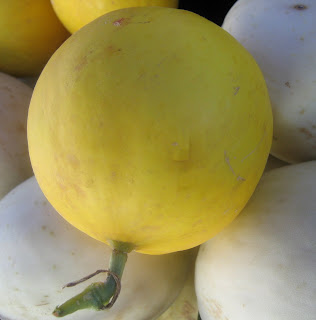
I am not sure if I can think of any fruit or vegetable that has such universal appeal and usage than the grape. From before biblical times these round, sweetly explosive orbs have garnered a place in myth and folklore. From the east coast of the North American continent to the Himalayas this climbing vine is at found a home, and seduced the residents. As a plant is offers much of itself for the table besides the obvious, its fruit, the leaves can be blanched then eaten and its branches manipulated into baskets.
Here on the east coast the musky, saccharine Concord grape tolerates the frosty slumber of winter, and is the quintessential component in jellies and juices. A more obscure variety is found on the southeast coast of the United States, the scuppernong, is intensely sweet with a thick skin that is best peeled away. This particular version is not much seen outside this region but does make a fabulous jelly – even if its color is more on the brown side than the royal purple of the Concord.

In recent years coming to market are varieties that would have historically gone to wine production such as chardonnay, merlot and cabernet sauvignon which are worth the try if you come across them – though they are never seedless. Pop grapes into a freezer bag and store for a hard, candy later in the year. Beware that once the grape has been harvested it will not continue to ripen so whatever its sweetness is so it shall remain. So, bring on the heat of late summer and let these jewels swell.
 Sautéed Halibut with Champagne Grapes
Sautéed Halibut with Champagne Grapes - yields 6 servings
2 pounds halibut fillets
1/4 cup all-purpose flour
Salt and freshly ground black pepper to taste
3 tablespoons olive oil
2 shallots - finely diced
1 red Asian chili - seeds discard and finely diced
1 garlic clove - diced
1/4 cup ver jus or champagne vinegar
1/2 cup white wine
1 tablespoon thyme leaves - roughly chopped
2 tablespoons chopped chives
1/2 cup Champagne grapes - all stems removed
2 tablespoons unsalted butter - at room temperature
Pre heat the oven to 250 degrees.
Cut the halibut into 6 pieces. Dredge the fish in the flour that has been seasoned with salt and pepper.
Heat a 12” sauté pan over a high heat and add the oil. Cook the fish until golden and cook thorough turning it over once about 6 minutes. Remove from the pan and place onto a plate. Hold in the oven to keep warm.
Draw off the excess oil in the sauté pan, and return to the heat. Add the shallots and chili cooking until the shallots just start to brown. Add the garlic and ver jus and reduce to a glaze. Pour in the white wine and thyme leaves and reduce the liquid by half. Remove the pan from the heat and add in the chives and grapes, and swirl in the butter. Correct seasoning with salt and pepper. Immediately pour the sauce over the fish and serve.
Green Grape Herbed Vinegar-yields about 2 quarts
1/4 pound fresh thyme
1/4 pound fresh lemon verbena
1/4 pound fresh basil
1/4 pound fresh fennel leaf
1 1/2 pounds green grapes
2 bottles (750 ml. each) white wine
In a clean 2-quart glass jar press the herbs and grapes, and then pour over the wine. Place a cloth or coffee filter over the lid, and place the bottle in a cool, dark place for 3 months.
Strain the vinegar through a fine sieve, and then bottle with a tight fitting lid.

 Coconut Chicken Stew – yields 6 servings
Coconut Chicken Stew – yields 6 servings





























